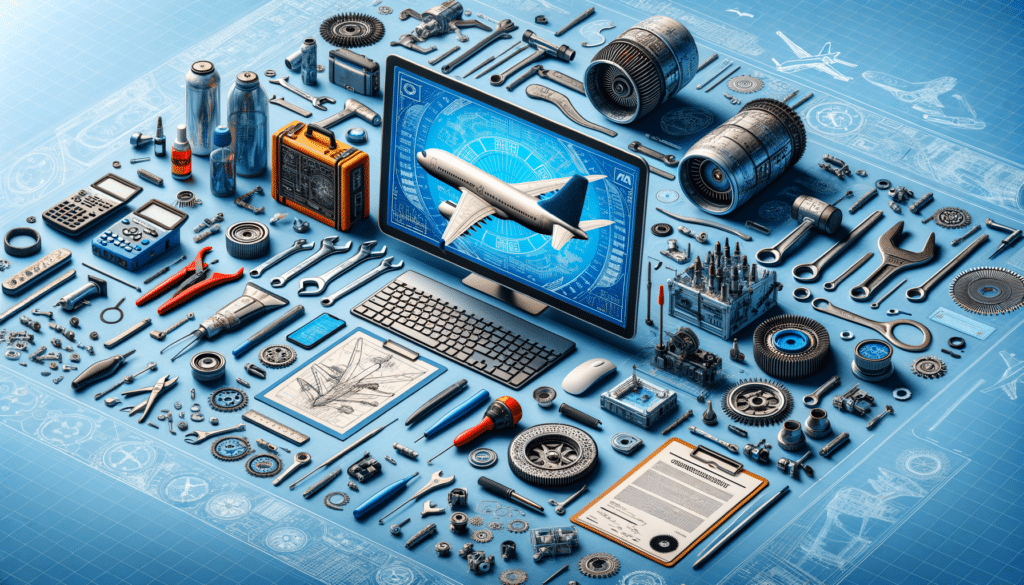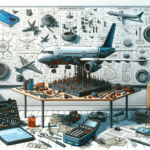Introduction to Aircraft Maintenance Technician Career
The aviation industry is a dynamic field, constantly evolving with technological advancements and regulatory updates. As an Aircraft Maintenance Technician (AMT), you play a crucial role in ensuring the safety and efficiency of aircraft operations. This career path offers a unique blend of technical expertise and hands-on work, making it an attractive choice for those passionate about aviation and mechanics. The demand for skilled AMTs is consistently high, driven by the need for regular aircraft maintenance and the expansion of airline fleets globally.
To embark on this career journey, understanding the requirements and opportunities available is essential. This guide will walk you through the necessary steps to become an AMT, including the educational pathways, certification processes, and career prospects. Whether you are just starting or considering a career change, this comprehensive overview will provide the insights needed to make informed decisions.
Educational Pathways: How to Become an Aircraft Maintenance Technician
The first step in becoming an Aircraft Maintenance Technician is to pursue the appropriate educational qualifications. Typically, aspiring AMTs enroll in an accredited Airframe and Powerplant (A&P) program. These programs are designed to provide both theoretical knowledge and practical skills required for aircraft maintenance. They cover a wide range of topics, including aircraft systems, engines, and avionics.
When selecting a program, consider the following factors:
- Accreditation: Ensure the program is accredited by the relevant aviation authorities.
- Curriculum: Look for a comprehensive curriculum that covers all necessary aspects of aircraft maintenance.
- Facilities: Check if the institution offers modern facilities and equipment for hands-on training.
- Industry Connections: Programs with strong industry ties may offer better internship and job placement opportunities.
Completing an A&P program typically takes about 18 to 24 months. After graduation, you will be eligible to take the FAA certification exams, a crucial step towards becoming a certified AMT.
Aircraft Maintenance Training Online: A Flexible Learning Option
With the rise of digital learning platforms, aspiring AMTs now have the option to pursue aircraft maintenance training online. This mode of education offers flexibility and accessibility, particularly beneficial for those balancing work or family commitments. Online programs often provide the theoretical components of the A&P curriculum, supplemented by virtual simulations and interactive modules.
When considering online training, evaluate the following:
- Program Structure: Ensure the online course aligns with FAA standards and includes necessary practical components.
- Technology: Check if the program uses advanced technology for simulations and virtual labs.
- Support: Look for programs that offer robust student support services, including academic advising and technical assistance.
- Reputation: Research the program’s reputation and read reviews from past students to gauge its effectiveness.
While online training can cover theoretical knowledge, practical experience is indispensable. Most online programs collaborate with local aviation facilities to provide hands-on training, ensuring you gain the necessary skills to excel in the field.
Aviation Maintenance Certification Program: Navigating the FAA Requirements
Certification is a critical milestone in your journey to becoming an Aircraft Maintenance Technician. The Federal Aviation Administration (FAA) sets the standards for AMT certification in the United States, requiring candidates to pass a series of exams that test their knowledge and skills.
The FAA certification process involves:
- Written Exams: Covering general, airframe, and powerplant knowledge.
- Oral and Practical Exams: Assessing your ability to apply theoretical knowledge in practical scenarios.
- Experience Requirements: Typically, candidates must have at least 18 months of practical experience for each rating (airframe and powerplant), or 30 months for both.
Preparing for these exams requires dedication and thorough study. Many training programs offer preparatory courses and practice exams, providing valuable resources to help you succeed. Once certified, you will be qualified to work on a wide range of aircraft, opening doors to various career opportunities in the aviation industry.
Conclusion: Launching Your Career as an Aircraft Maintenance Technician
Embarking on a career as an Aircraft Maintenance Technician is both challenging and rewarding. With the right education, training, and certification, you can secure a position in this high-demand field, contributing to the safety and efficiency of the aviation industry. The journey requires commitment and a passion for continuous learning, as technological advancements and regulatory changes are constant in aviation.
By following the steps outlined in this guide, you will be well-prepared to navigate the complexities of FAA requirements, choose the right educational path, and ultimately launch a successful career as an AMT. As you progress, remember that each aircraft you work on plays a vital role in connecting people and places, making your contribution to aviation invaluable.


